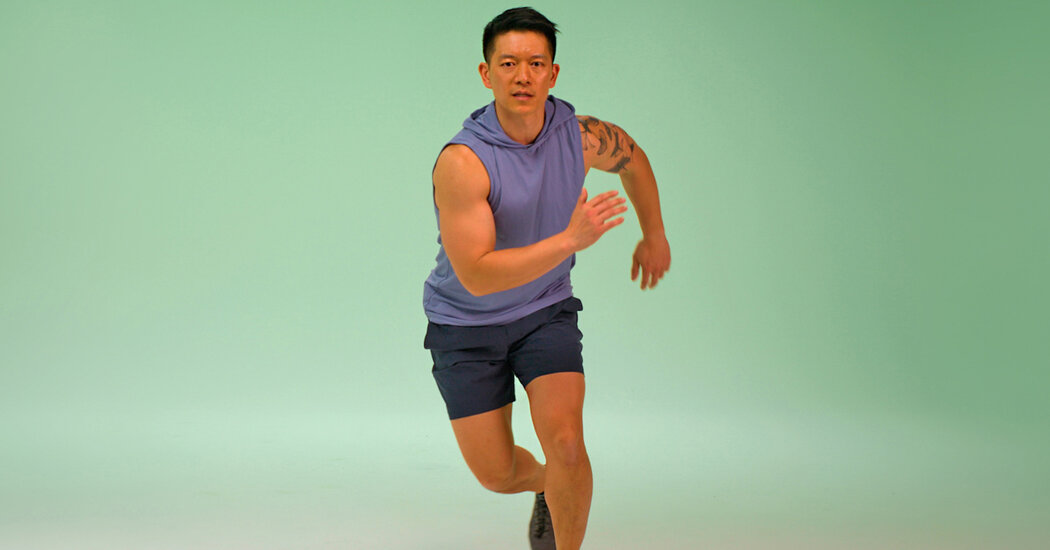Dr. Howard Luks didn’t think much about agility — the ability to move quickly while changing speed and direction — until movements that used to come easily became more challenging.
Dr. Luks, 61, works as an orthopedic surgeon and is an avid trail runner and climber. During his outdoor workouts, he began to struggle with side-to-side motion on a rock wall and had lost confidence in his footing on rocky trails. He also noticed he was tripping more on things like the edge of a rug.
Dr. Luks regularly treats injuries from trips and falls, like broken or sprained wrists, rotator cuff tears and Achilles tears. Those patients might have avoided their visit to his clinic, he said, if they had trained to maintain their agility. He didn’t want to end up in the same place.
“My strength training used to involve the usual moves, like squats and curls,” Dr. Luks said, “but I started to work on agility so that I could peel back age-related changes.”
Like balance, power and mobility, your agility generally decreases with age unless you train it regularly. The key to a good agility program is exercises that quickly change direction, said Milica McDowell, a physical therapist in Montana.
Getting into a regular habit of agility training can help you avoid a fall as well as improve your mental acuity. If you play sports like pickleball, soccer or basketball, agility can help you quickly stop and start, especially when moving laterally or pivoting.
While agility training, use a flat training shoe or even go barefoot on a cushioned surface, said Dr. McDowell. “This is not a time to work out in big, cushy training shoes, because you’ll risk an ankle sprain.”
Practicing a few times a week, you can expect to see improvements within a couple weeks, said Brett Poniros, a strength and conditioning coach in New Jersey and Dr. Luks’ trainer.
“You’ll feel the mental confidence of your training first,” Mr. Poniros explained, “feeling comfortable moving faster. Then you’ll see the physiological change.”
Overview
Time: 20 to 25 minutes
Intensity: Moderate
Rounds: Two to three sets of each exercise
What You’ll Need
-
Two small cones. You can also use yoga blocks or dumbbells in their place.
-
A racquetball, tennis ball or other small ball that can bounce.
-
Chalk or tape for the ground to simulate an agility ladder, which you can also use.
Adjust for You
If you are new to agility training, scale the moves to your ability. Where one athlete might shuttle run between cones, an 82-year-old who does little exercise might replace the run with a step toward a cone and then a step back.
Thes exercises can be done as a single agility workout or you can select those you find most valuable and add them to your fitness routine.
The Workout
Sequence: Complete each drill three times before moving to the next. Start with one minute of rest after each drill and work that down to 30 seconds.
For each movement: Do as many repetitions as you can in the time allowed. The goal is to increase your speed.
Carioca drill
Repetitions: 30 seconds in each direction, repeated three times
Standing in place with your knees slightly bent, cross your right foot in front of your left, then bring your left foot out and step sideways. Bring your right foot behind your left, then move your left foot to the left and sideways.
Continue each lateral movement for 30 seconds, rest, then switch directions. Ideally you should do this in an open area, but if you have limited space, adapt to what is available.
Ladder drills
Repetitions: 30 seconds, repeated three times
Start with a 15-foot chalk line, tape or cord. Quickly step over the line with one foot at a time, bringing both feet to one side before going back across to the other. With each step, move sideways down the line until you reach the end. Turn back to go the opposite way.
As you improve, try an agility ladder to do these step-ins/outs while moving forward up and down the ladder.
Figure Eight Drill
Repetitions: 20 seconds, repeated three times
Set two dumbbells, cones or yoga blocks 10 to 15 feet apart. Picture the top, bottom and middle of a figure eight in your mind. Run the figure eight, aiming to improve your reaction time on turns and curves. Try switching directions with each set.
Agility Balls
Repetitions: 30 seconds, repeated three times
Hold a tennis ball or other small, bouncy ball in front of you near ear level. Drop it and squat down quickly with the goal of catching it in the same hand after it bounces once and starts to come down again.
To make this more challenging, toss the ball against a wall and catch it one hand.
Skaters
Repetitions: 15 repetitions, repeated three times
Beginning on your left foot, hop sideways onto the right, then quickly back to the left while gently swinging your arms. Work into a back-and-forth rhythm and focus on a soft landings. As you improve your control and speed, practice staying on one foot for a few seconds before hopping to the other.
Shuttle runs
Repetitions: 30 seconds, repeated three times
On a flat, open space, mark two points about 25 feet apart. Sprint from one to the other, stopping briefly before sprinting back. You can do this by shuffling side to side for more of a challenge, or just run up and back.
Another more challenging option is to invite a friend to help. Shuffle in one direction, and when your partner gives a signal, move in a different direction.
On-set trainer: Anna Maltby




